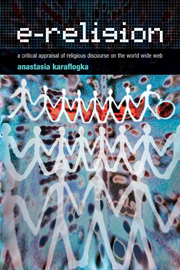5 - Research Process and Method
Summary
My method of identifying a representative sample of websites involved repeated searching of the Web, using keywords and hyperlinks, over almost the whole period of preparation of this thesis. I could have approached this theoretical study by identifying, in advance of any empirical examples, “types” of websites which would represent different poles of expression within an overall religious discourse in cyberspace. For example, I might have presupposed that Buddhist websites would be very different from Islamic, and so on. However, this approach would have produced findings which simply reflected my naive assumptions. Instead, over a period of years I explored the Web, gradually building a sense of what is to be found in cyberspace, and from this knowledge I developed a series of experimental typologies (discussed in detail in the Introduction). The most recent of these typologies presented here is not the final word, but allows me to present a genuinely varied sample of websites, differentiated not by sectarian or doctrinal characteristics, but by aspects such as authorship, “voice”, variability over time, utilization of Web technologies, discursive formations, etc. (see Chapter 6 on Methodology).
My prior involvement with ICTs, mostly the Web, proved to be both beneficial and disadvantageous, in the sense that while offering me a base upon which I would develop and expand my research, it also created a number of presumptions, especially regarding certain aspects of my field.
- Type
- Chapter
- Information
- E-ReligionA Critical Appraisal of Religious Discourse on the World Wide Web, pp. 134 - 141Publisher: Acumen PublishingPrint publication year: 2007

